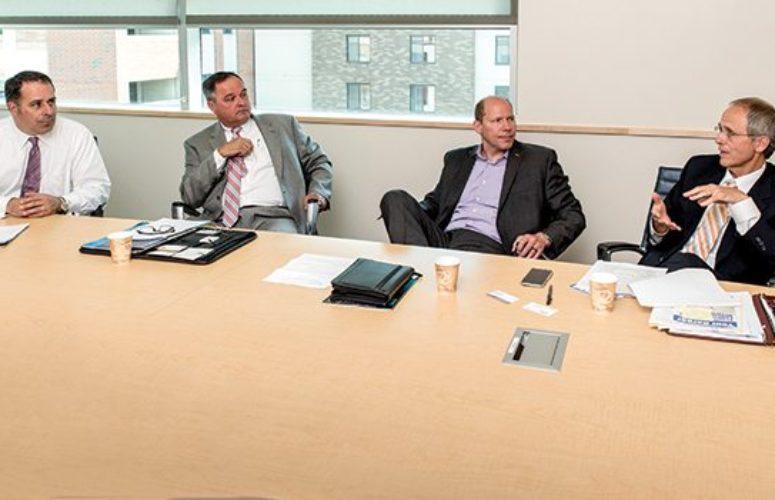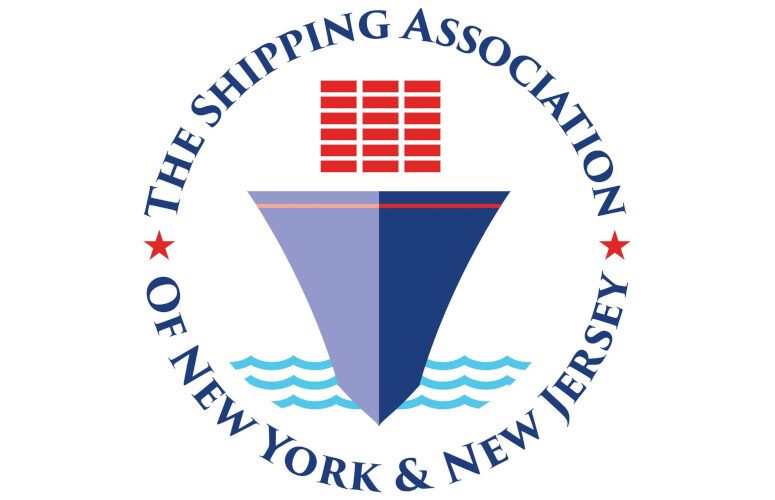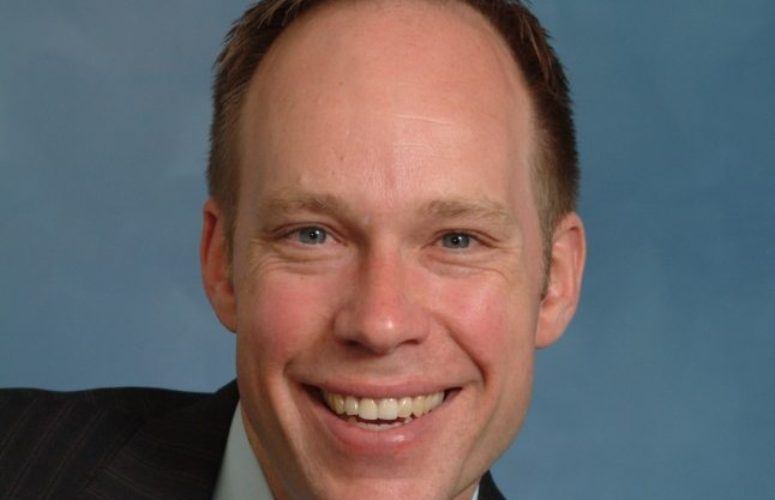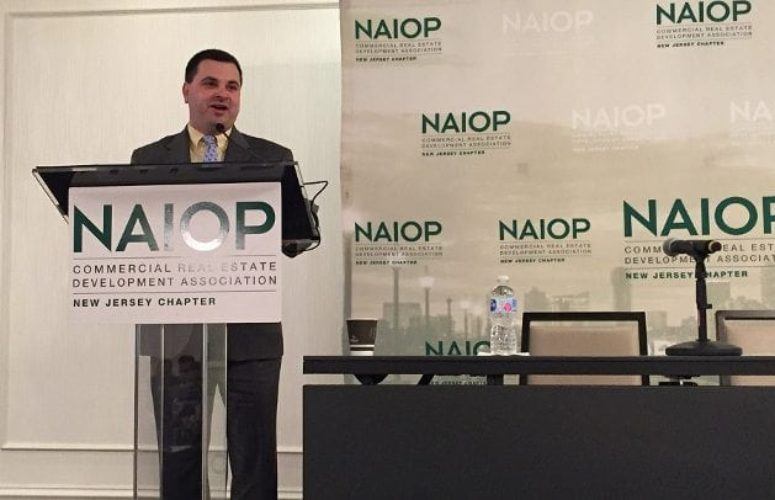
Logistics Industry Overcoming Roadblocks
By Anthony Birritteri, Editor-in-Chief On Oct 24, 2016New Jersey has a robust network of roads, bridges, highways, airports and seaports. The state is also blessed with a dense population, one of the highest median household income rates in the nation and close proximity to the metropolises of New York and Philadelphia. Combine all of these factors and you realize why the logistics industry is and remains vibrant here. However, logistics industry experts reveal, in this final installment of New Jersey Business magazine’s 2016 Trade-talk Roundtable series, that all is not smooth sailing, open-road driving or happy landings. On the following pages, we sit down with industry leaders to discover the successes, the challenges and the future of this vital business sector. Increased regulations, a proposed gas tax increase, technology and more are impacting the industry. How will it “Keep on Trucking” to meet the changing buying demands of today’s businesses and consumers? Read on for the answers.
Participating in this Roundtable are:
Thomas W. Connery is president and COO of New England Motor Freight (NEMF), a division of the Shevell Group. He joined the company is 2006 as executive vice president and was promoted to COO in 2007. He was named president in October 2014. Prior to joining NEMF, he spent 11 years with Con-Way Transportation, where he was regional sales and operations manager for the company’s New England region. He began his career in 1985 with APA Transport. He is a member of the NJ Motor Truck Association and the Association for Corporate Growth, New Jersey chapter. He is also a member of the Board of Trustees of the International Association of Machinists National Pension Plan.
Mark Giuffré is vice president of state and government affairs (east region) for UPS, responsible for public policy that affects all UPS entities in the Northeastern United States. He started working at UPS in 1988 as a package car driver. In 1989, he was promoted into management and spent three years supervising on-car and preload operations in the New York City area. From 1992 to 1994, he served as communications/human resources supervisor for the Metro New York District, and then moved to Atlanta, where he spent another two years working in UPS’s corporate communications office. In 1996, he was promoted to communications manager for the Northeast Region. In 2001, he served as the UPS Airlines Public Relations manager. He was later promoted to Region Public Affairs manager in 2007. He was promoted to his current assignment in 2013.
Michael G. McGuinness is CEO of NAIOP New Jersey, the commercial real estate development association, which represents some 750 members in the state. In addition to overseeing the daily operations and programs of the chapter, McGuinness directs the government affairs program and manages the Developers Political Action Committee (DPAC). Prior to joining NAIOP in 1997, McGuinness served as Acting Director for Governor Christine Todd Whitman’s Office of the Business Ombudsman. McGuinness currently serves as: a member of the Council on Port Performance, administered by the Port Authority of New York & New Jersey; a founding member of the Smart Growth Economic Development Coalition; and a trustee and environmental chair of the New Jersey Society for Environmental, Economic Development (NJ SEED). He has also served on the New Jersey Commerce and Economic Growth Commission from 2002-2004.
John J. Nardi is president of the New York Shipping Association (NYSA). The organization is comprised of ocean cargo carriers, terminal operators, stevedores and marine-related businesses in the New York/New Jersey port area. Before becoming president in 2013, he served as NYSA executive vice president. In 2014, he co-chaired the Port of NY&NJ Port Performance Task Force. Nardi has nearly 30 years of experience in the maritime industry. He began his career with Atlantic Container Line. In 1994, he joined Hapag-Lloyd (America), Inc. where he held a series of management positions, including executive vice president of corporate operations. He assumed full operational responsibility for Latin and South America in July 2009, when the company merged its North America and Latin America operations.
Q: Please describe your organization and the role it plays in the logistics industry.
Giuffré: UPS is the world’s largest transportation and logistics company. We are the third largest private employer in New Jersey with about 19,000 workers here. We like to say UPS is a good bellwether of the economy when you look at what goes through our system; about 7 percent of the gross domestic product at any one time. For us, it is a lot more than just package delivery. It is about all the expanded capabilities that we offer customers. It’s the information systems and how information is used to help support the supply chain. It’s the warehouse management, distribution and return services … so many other aspects of what our business is today.
Nardi: Our members are terminal operators who work in the port, and ocean carriers who bring cargo to the port. Our main responsibility is to negotiate the collective bargaining agreements on behalf of those members with the International Longshoremen’s Association in the Port of New York and New Jersey. We get involved in any subject that impacts the flow of cargo because it affects our competitiveness.
Our members moved about 3.4 million containers in and out of the port last year.
Connery: New England Motor Freight (NEMF) is a privately held transportation and logistics company based out of Elizabeth and owned by Myron Shevell, former vice chairman of NJ Transit. He founded the business 40 years ago. We have 40 facilities spread over a 20-state region. We have about 4,000 employees, 2,000 based in New Jersey. We are a member of the New Jersey Motor Truck Association (NJMTA) and work hand-in-hand with the NJMTA to try to advance causes that support not only the industry, but local roads and infrastructure spending.
McGuinness: NAIOP NJ is a commercial real estate development association. We represent developers, owners, investors and asset managers for commercial real estate, which includes industrial, mixed-use and office properties. We have about 750 members in the state and 18,000 throughout North America. We are primarily an advocacy group, but we also conduct research and educate our members and the public. We provide business development and networking opportunities for members.
Q: From your perspectives, what are the positive attributes of the state’s network of ports, highways, airports, warehousing and industrial facilities, etc.?
Giuffré: One of the great things is the connectivity of all the different modes of transportation. We have the airport operations, the ports, the railyards, and the connectivity to such a large consumer market. The connectivity to Philadelphia, New York and elsewhere helps make New Jersey one of the hubs of the logistics industry.
Nardi: New Jersey is situated in the most densely populated and affluent consumer market in the world. Ships coming up from the Panama Canal typically call on New York and New Jersey first. This gives us the advantage of moving cargo, which goes beyond the New York/New Jersey area, into the Midwest hinterland.
Q: What are some of the challenges of operating in the state?
Giuffré: The state has done a great job investing in its infrastructure. However, you can widen the Turnpike all you want, but in the end, it funnels into some significant pinch points, whether it is the George Washington Bridge (GWB), the tunnels or elsewhere. This is something that, from a regional perspective, must be looked at; creating freight corridors and eliminating some of the bottlenecks to allow goods to flow seamlessly.
Nardi: New Jersey is a high cost location with tolls that need to be paid, and the tolls are higher than anywhere else that we experience. The cost of living is high, labor costs are high. It is a challenge to be competitive with other ports.
One thing we are trying to overcome is the 8:00 a.m.-to-5:00 p.m. mentality that exists when it comes to the movement of freight. We need to use different parts of the clock to deliver some of the freight and get it off the road during some of the busy times. However, the whole supply chain must evolve around that. It just can’t be the marine terminals. It has to be the people accepting the cargo.
Connery: Cost and regulations are the two biggest issues that we face in our business. NEMF is a mid-sized privately held trucking company and, believe it or not, our tolls run in excess of $1 million a month. Eighty-five percent of that cost is in the metro New York/New Jersey corridor. The challenge of absorbing toll cost increases every year, and trying to pass them onto the customer becomes extremely difficult, so the company ends up reducing its margins. That is our biggest hurdle. Then throw on all the regulations hitting the industry and it is tough to make a profit.
McGuinness: Land costs are keeping the supply a bit constrained, certainly for warehouse distribution centers. Southern New Jersey has more affordable land at the moment.
A lot of the road congestion happens after the goods get to the warehouses. From the warehouse to the consumer is another big issue, especially for towns dealing with a 24/7 consumer mentality. We are participating with the New Jersey Transportation Planning Authority on a study to look at best management practices for trucks and towns.
Nardi: I’d like to add that one of the choke points that we see in our business is due to a shortage of customs agents. We are investing billions of dollars in infrastructure, but if we don’t have customs agents to release the freight, it doesn’t do us any good. Some 2,000 customs agents were introduced into the system last year and 10 of them went to the seaports (across the nation) because the focus is on securing our boarders.
Q: Is New Jersey a better place to do business in versus using port and warehouse facilities on the other side of the Hudson River?
Giuffré: The whole region is a very difficult place in which to do business.
Nardi: It is a bit of a different story for the international container business. Ninety percent of the man hours worked for my members is done in New Jersey. This has shifted over the years when the association started in the 1950s, when most of the work was in New York. Now you need massive facilities and space to stage the containers, so the business has evolved from being New York centric to New Jersey centric. The Port of New York and New Jersey, for all practical purposes, is in New Jersey, and we don’t see anything changing that in the future.
Q: What is the condition of our roads, bridges and ports?
Connery: I think everyone knows that the infrastructure is lacking, based on the population it serves. When the various pieces of infrastructure were built, they were never expected to handle the current volume of trucks and cars. Unless they undertake more projects like the Tappan Zee Bridge in New York – where they rebuild these things on a massive scale, which takes huge dollars – it will continue to be a struggle because you are just patching and fixing … not solving problems.
For example, the upper lanes of the GWB have been under construction for years, and truck traffic goes down to two or three lanes at night. The cost to our business has just been staggering because of the delays.
Giuffré: And the upper deck of the GWB is the only deck trucks can go on. Work is done at night, but that is our busiest time. We miss 18 to 19 loads every night that we are stuck in that traffic.
Connery: We have taken the step of changing our entire nighttime line haul network to go around the GWB because the tolls are so expensive. The toll for a five-axle tractor trailer to cross the bridge is $105 cash, with the E-Z Pass discount, it is $75 to $80. Our drivers are now going 21 miles and spending 40 minutes going up to the Tappan Zee Bridge where the toll is $35 less than the GWB toll.
Giuffré: On top of that, add your gas taxes. We are putting a lot [of money] into this system, but we feel we are not getting back what we should be getting back.
Q: How will the proposed gas tax increase impact your operations?
Giuffré: Regarding the Transportation Trust Fund (TTF), for years [the state] has had the opportunity to increase the fuel tax. Even if the increases were small – three cents to five cents at a time – it would have filled the gap instead of waiting 10 to 12 years to suddenly impose a 23-cent increase. It is necessary and we are willing to pay that [increase], but the increase could have been done in a way that was gradual, instead of waiting until we were in crisis mode.
McGuinness: Look at the mass-transit riders; half-a-million people take buses and trains every day. Their fares keep going up almost every year, as opposed to people who buy gas. So, I consider [a gas tax increase] to be tax fairness.
Connery: We consume 1.3-million to 1.5-million gallons of diesel fuel a month. Twenty-five percent of that is in New Jersey. So the company would have to absorb that cost increase and, to Mark’s point, it would be like flipping the switch overnight and adding millions of dollars to our cost of doing business.
Giuffré: Obviously, that impacts the final mile delivery and the cost of getting goods to consumers. It is going to cost [them] more if it costs us more. For a small trucking company that has a contract based on a fuel rate at one level, and all of a sudden it takes a huge hit because of a significant [gas tax increase], it is going to hurt them.
Nardi: I couldn’t agree more. Nobody likes cost increases, and businesses hate cost increases that they can’t pass on. They despise cost increases that can’t be predicted. To have this tax increase put on businesses midstream is going to hurt a lot of small businesses.
Q: Are there other alternatives available to fund long-term transportation improvement projects?
Giuffré: The gas tax is the easiest to collect, the least expensive to collect, and the hardest to evade. It is a good user-based system.
McGuinness: The TTF has to be part of the mix. We also know there are plenty of other ways to raise revenues. One proposal that I raised years ago to Governor Corzine is to toll Interstates 78, 80 and 295, because you have tons of trucks picking up goods in the port and going to these huge e-commerce distribution centers up in the Lehigh Valley, which is eating our lunch. I have gone on tours of these centers. They are beautiful and [Pennsylvania] is putting a lot of money into infrastructure. So, why are we just penalizing the truckers going into New York City and Long Island?
Giuffré: I would disagree with that because tolls are the least efficient and worst way to try to pay as you go on the roads. The cost of collection is significant. There are better ways to pay for the roads.
Q: From a technology standpoint, how is the industry changing for all of you?
Giuffré: From the UPS perspective, we are investing over $1 billion dollars a year in technology to make us more efficient, reduce mileage and make us greener.
Connery: Technology is significant. If you go back 10 years, we would pay $65,000 for a class A tractor. Because of the technology, we are now paying $105,000. The dashboard in a truck now looks like a 747 with all of the wiring, electronics and the emissions controls that are present. We are now going to have electronic logs that will be required as of Dec. 17. There will be no more paper logs; everything will be electronically tied to the engine. We are in favor of this, but these are costly technologies.
Giuffré: When you look at the future developments, whether it is smart roads, autonomous vehicles or platooning, we see the industry changing. (According to an article on Truckinginfo.com, platooning involves using technologies to create semi-autonomous road trains, where two or more trucks are controlled by a lead vehicle through wireless communications using sensors. Trucks in such a convoy are able to drive close together, reducing aerodynamic drag and increasing fuel-efficiency by as much as 20 percent).
Though we are not at the point where trucks will drive themselves, we see Tesla and Google testing those technologies. Those can be game changers in the way we do things.
Q: When I think of technology, I think of skilled labor. Are you having a difficult time finding qualified workers?
Giuffré: I think the big challenge when you look at workforce development in the trucking industry, nationally, is the aging demographic for Class A commercial licensed drivers. We don’t have young people coming into the industry, so we are hitting a critical point where there is a shortage of qualified drivers … also diesel technicians.
We can address some of these issues through technical schools. You might have students coming out of high school who might not be geared towards going to college, and many of these truck-driving jobs are good-paying, career jobs that you can raise a family on. UPS has a training [program] where our delivery drivers have the opportunity to graduate to tractor trailer drivers.
McGuinness: The New Jersey Department of Labor and Workforce Development has a brochure with dozens of logistics jobs and starting salaries based on high school or college equivalent degrees.
Q: How much does the average truck driver make per hour?
Connery: Ours guys are union members, so they run from $20 to $25 an hour depending on the contract, plus generous fringe benefits and pension payments.
Giuffré: Our average driver at UPS gets about $32 an hour, plus an additional $30 an hour in benefits.
Nardi: For us, the straight time rate is about $33 an hour.
Q: How is the trend of direct-to-consumer impacting your industry?
Connery: It has been a positive for us. Amazon is a very large customer of ours, as it is for UPS. I know these guys bring in a lot of containers and they buy a ton of real estate. I think it has had an impact on everyone sitting at this table. They are single-handedly changing the retail industry. There is greater pressure to deliver in faster time frames at lower costs. As business people, we have to improve our game to be able to compete.
Giuffré: We used to be a business-to-business, wholesale-to-wholesale type of industry. The main focus today is business-to-consumer direct. Technology is changing that, whether it is e-commerce, all the different ways people are buying and getting goods … it is driving the changes in this industry, significantly.
McGuinness: This whole consumer 24/7 online shopping experience is prompting omni-channel retailing, and traditional stores need the “just-in-time” inventory space. Consumers are buying products online and, a few hours later, they go to pick up the items at the store.
Q: Looking at the growth of Amazon in New Jersey, does the state have available land for more warehouse and distribution space?
McGuinness: Definitely. I-295 from Trenton down through southwest Jersey has lots of opportunities. We are seeing this growing demand moving further south. I see that keeping up for a few years.
Q: What legislation from a local, national and global perspective would you consider to be game changers?
Giuffré: The main thing would be the Trans-Pacific Partnership (TPP) and other trade agreements.
Q: Will the TPP be good or bad for businesses?
Giuffré: One hundred percent good. It means so much more in terms of the benefits, not just for jobs abroad, but the jobs it creates here. We see our business, when a trade lane is open, grow by almost 20 percent immediately into those [partnering] countries. It is not just UPS business, but all of our customers, small-, medium- and large-sized businesses that now have access into new markets where they can sell their goods. UPS is a huge supporter of TPP and trade agreements as a whole. I believe they are vital to health of the US economy.
Q: There is the perception that these agreements aren’t a good thing, that they will result in US job losses.
Giuffré: The world is flat today due to e-commerce, and small businesses here in New Jersey are able to sell their goods [globally]. It is no longer the old days of trade where you had to have international lines of credit and you needed someone overseas to help facilitate the transaction. The financial system and everything else is set in a way that makes it simple, and opens markets to people selling goods to expanding markets.
From UPS’s perspective, every time we add another 22 export or import packages into our system, it creates another job.
Q: When looking at consumer and business trends, can you give me your 5-to-10-year economic forecast?
McGuinness: New Jersey will remain a very desirable place for companies in the logistics industry for many more years. In the north, you will have smaller distribution centers, while the southern part of the state will continue to have big ones (million square footers) for at least another three years. I wouldn’t venture beyond that.
Nardi: It depends on the world economy, the TPP, exchange rates, etc. We have had tremendous growth over the last 20 years, and we expect to continue to grow as long as there aren’t restrictions put in place that will make it impossible to ship goods around the world.
Despite the past growth, it also seems like we are in a period where trade is not growing that fast. What is going to be the next driver to push it again? Nobody knows right now. We have always seen growth in the 5 percent to 7 percent range. We are not seeing it now, but there is nothing to say that we are going to see a contraction. We are looking at a 2 percent to 3 percent growth rate every year. We think that will still be the case unless something dramatic happens.
Related Articles:






